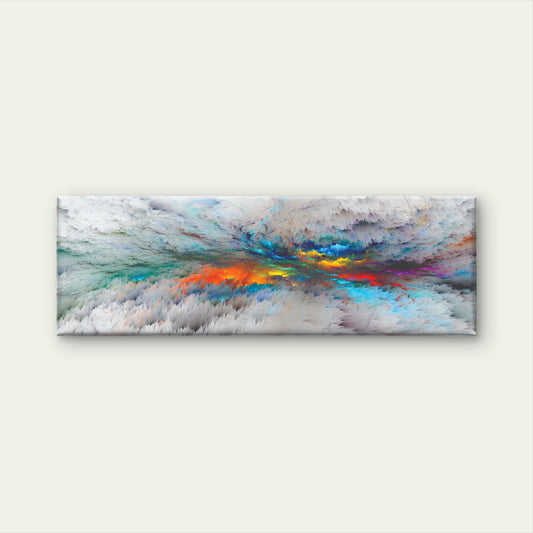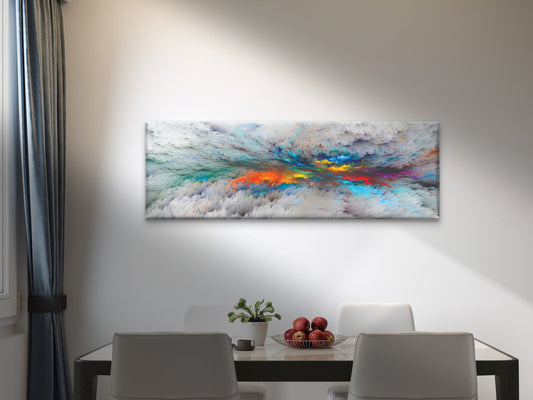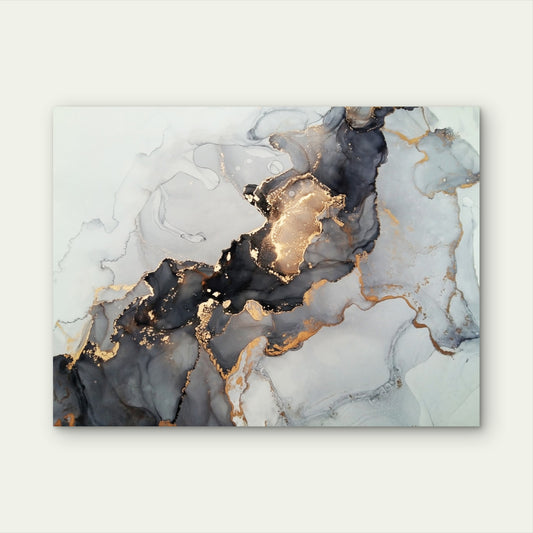Abstract art, characterized by its departure from reality and representation, is a groundbreaking movement that redefined the world of visual expression. Instead of focusing on the physical world, abstract artists sought to convey emotions, ideas, and a new kind of beauty through form, color, and line. As the abstract art movement evolved, it also began to influence modern mediums such as acrylic glass, metal prints, and canvas arts, which now bring abstract art into homes as unique wall art displays. To understand the depth and legacy of this movement, let's explore its origins in the late 19th and early 20th centuries, a time when the world was undergoing massive transformations in thought, technology, and society.
The Late 19th Century: The Seeds of Abstraction
The groundwork for abstract art was laid in the late 1800s, a period marked by significant shifts in both culture and science. Impressionism, with artists like Claude Monet and Édouard Manet, was one of the first movements to challenge the traditional norms of representation. Although Impressionist painters still focused on real-world subjects, they began to emphasize light, color, and atmosphere over detailed accuracy.
At the same time, the development of photography raised questions about the necessity of realism in painting. If a camera could accurately capture reality, many artists began to explore what else art could do. This questioning of traditional art set the stage for abstraction, as artists looked beyond visual reality to express the unseen—emotions, spiritual experiences, and universal truths, eventually influencing the modern formats in which abstract works are now produced, such as canvas arts and acrylic glass prints.
Early 20th Century: The Rise of Abstract Movements
In the early 20th century, the push toward abstraction gathered momentum, especially in Europe. Three major artists are often credited with being pioneers of abstract art: Wassily Kandinsky, Piet Mondrian, and Kazimir Malevich.
1. Wassily Kandinsky: Considered one of the fathers of abstract art, Kandinsky was deeply influenced by music and believed that painting, like music, could exist in a purely abstract form. He sought to convey emotion and spirituality through the interplay of color and form, rather than relying on recognizable subjects. His famous work *Composition VII* (1913) exemplifies this approach, with its chaotic explosion of shapes and colors that evoke intense feelings without depicting anything concrete.
2. Piet Mondrian: Mondrian took abstraction to a new level of simplicity and order. His works, characterized by geometric shapes and primary colors, sought to express a sense of universal harmony. His De Stijl movement embraced a philosophy of reducing art to its most basic elements, with his famous grids of horizontal and vertical lines. Today, Mondrian's style is often recreated in modern formats like metal prints and wall arts, adding a contemporary twist to his vision of balance.
3. Kazimir Malevich: Malevich pushed the boundaries of abstraction with his Suprematism movement, which focused on pure geometric shapes and colors. His work Black Square (1915) was revolutionary in its stark minimalism, representing the total rejection of representation. This bold statement signaled that art could exist purely as form, influencing how abstract art is now appreciated in various mediums, such as canvas arts and acrylic glass prints.
The Influence of Cubism and Futurism
Simultaneously, other movements contributed to the development of abstraction. Cubism, led by Pablo Picasso and Georges Braque, fragmented objects into geometric shapes and multiple perspectives, breaking away from traditional modes of depicting space and form. This analytical approach to representing objects influenced many early abstract artists by encouraging a focus on form and structure rather than realism.
Futurism, another avant-garde movement, embraced the energy and dynamism of modern life. Futurists sought to capture motion and the mechanical age through abstract, fragmented forms. Both movements introduced new ways of thinking about space, time, and the depiction of reality, which fed into the evolving abstract language, impacting not just the fine arts but also modern wall art formats like metal prints and canvas arts.
The Role of Spirituality and Philosophy
Abstract art wasn’t merely an aesthetic choice; it was also deeply tied to spiritual and philosophical ideas. Many abstract artists were influenced by movements such as Theosophy, a spiritual philosophy that sought to understand the mysteries of life through esoteric knowledge. Artists like Kandinsky and Mondrian believed that abstract forms could express higher spiritual realities, transcending the material world.
Kandinsky, for instance, wrote extensively about the connections between color, form, and spirituality in his book Concerning the Spiritual in Art (1912), arguing that abstraction allowed artists to communicate inner emotions and universal truths in ways that figurative art could not. This inner exploration has influenced modern expressions of abstract art, from acrylic glass prints that bring a sense of transparency and depth to a room, to minimalist wall arts that capture the viewer’s attention with bold color schemes and shapes.
The Spread of Abstract Art in the 20th Century
As the 20th century progressed, abstract art continued to evolve and spread. In the 1930s and 1940s, artists in the United States, particularly those associated with the Abstract Expressionist movement, took abstraction in bold new directions. Artists like Jackson Pollock, Mark Rothko, and Willem de Kooning pushed the boundaries of gesture, emotion, and color in their work, making abstraction a dominant force in the post-World War II art world.
Pollock’s famous drip paintings transformed the act of painting itself into a form of performance, while Rothko’s large, glowing fields of color aimed to provoke deep emotional responses. Their work has inspired many modern interpretations, influencing the design of contemporary wall arts, canvas arts, and acrylic glass prints.
Conclusion: Abstract Art’s Lasting Legacy
From its early roots in the late 19th century to its explosive growth in the 20th century, abstract art revolutionized how we think about art and its possibilities. By moving away from traditional representation, abstract artists opened up a world of expression that focused on the unseen, the emotional, and the spiritual.
Abstract art continues to influence contemporary artists and movements, proving its enduring power to inspire and challenge the boundaries of visual creativity. Today, the legacy of abstract art can be found in modern art forms like canvas arts, metal prints, and acrylic glass wall arts, making these expressive works accessible to art lovers everywhere. Whether through the harmonious lines of Mondrian or the chaotic gestures of Pollock, abstract art remains a testament to the limitless possibilities of human expression.









